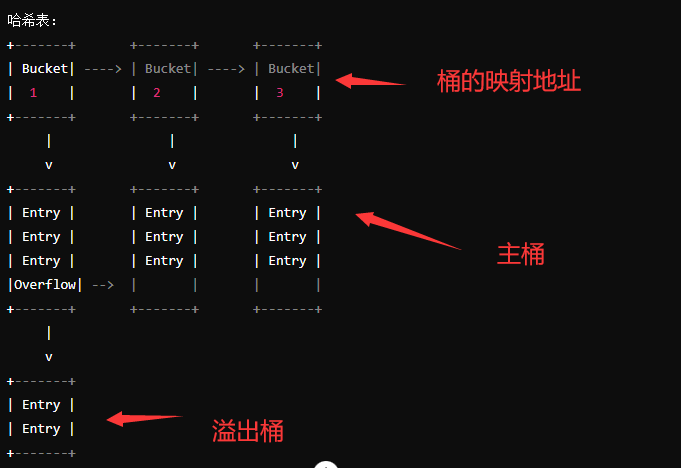目录
- 39. 组合总和
- 题目描述
- 题解
- 40. 组合总和 II
- 题目描述
- 题解
- 131. 分割回文串
- 题目描述
- 题解
39. 组合总和
点此跳转题目链接
题目描述
给你一个 无重复元素 的整数数组 candidates 和一个目标整数 target ,找出 candidates 中可以使数字和为目标数 target 的 所有 不同组合 ,并以列表形式返回。你可以按 任意顺序 返回这些组合。
candidates 中的 同一个 数字可以 无限制重复被选取 。如果至少一个数字的被选数量不同,则两种组合是不同的。
对于给定的输入,保证和为 target 的不同组合数少于 150 个。
示例 1:
输入:candidates = [2,3,6,7], target = 7
输出:[[2,2,3],[7]]
解释:
2 和 3 可以形成一组候选,2 + 2 + 3 = 7 。注意 2 可以使用多次。
7 也是一个候选, 7 = 7 。
仅有这两种组合。
示例 2:
输入: candidates = [2,3,5], target = 8
输出: [[2,2,2,2],[2,3,3],[3,5]]
示例 3:
输入: candidates = [2], target = 1
输出: []
提示:
1 <= candidates.length <= 302 <= candidates[i] <= 40candidates的所有元素 互不相同1 <= target <= 40
题解
经典的回溯算法题目,和 打卡-回溯算法 I 中的几道题的差不多,直接按照 回溯三部曲——处理、递归、回溯 来解决即可:
class Solution
{
private:
vector<int> path;
vector<vector<int>> res;
public:
void backTracking(const vector<int> &candidates, int target, int curSum, int start)
{
// 递归出口(纵向遍历)
if (curSum == target)
{
res.push_back(path);
return;
}
// 剪枝
if (curSum > target)
return;
// 横向遍历
for (int i = start; i < candidates.size(); ++i)
{
path.push_back(candidates[i]);
curSum += candidates[i]; // 处理
backTracking(candidates, target, curSum, i); // 递归
path.pop_back(); // 回溯
curSum -= candidates[i];
}
}
vector<vector<int>> combinationSum(vector<int> &candidates, int target)
{
backTracking(candidates, target, 0, 0);
return res;
}
};
注意一下题目说“ candidates 中的 同一个 数字可以 无限制重复被选取 ”,所以递归时:
backTracking(candidates, target, curSum, i); // 递归
最后一个参数传的还是 i ,而不是许多类似题目中的 i + 1 。
40. 组合总和 II
点此跳转题目链接
题目描述
给定一个候选人编号的集合 candidates 和一个目标数 target ,找出 candidates 中所有可以使数字和为 target 的组合。
candidates 中的每个数字在每个组合中只能使用 一次 。
注意: 解集不能包含重复的组合。
示例 1:
输入: candidates = [10,1,2,7,6,1,5], target = 8,
输出:
[
[1,1,6],
[1,2,5],
[1,7],
[2,6]
]
示例 2:
输入: candidates = [2,5,2,1,2], target = 5,
输出:
[
[1,2,2],
[5]
]
提示:
1 <= candidates.length <= 1001 <= candidates[i] <= 501 <= target <= 30
题解
这题的基本框架还是很经典的回溯算法,和 打卡-回溯算法 I 中的几道题差不多,按部就班地写出 回溯三部曲
- 处理
- 递归
- 回溯
就能得到底层代码:
class Solution
{
private:
vector<int> path;
vector<vector<int>> res;
public:
void backTracking(const vector<int> &candidates, int target, int curSum, int start)
{
// 递归出口(纵向遍历)
if (curSum == target)
{
res.push_back(path);
return;
}
// 剪枝
if (curSum > target)
return;
// 横向遍历
for (int i = start; i < candidates.size(); ++i)
{
path.push_back(candidates[i]);
curSum += candidates[i]; // 处理
backTracking(candidates, target, curSum, i + 1); // 递归
path.pop_back(); // 回溯
curSum -= candidates[i];
}
}
vector<vector<int>> combinationSum2(vector<int> &candidates, int target)
{
backTracking(candidates, target, 0, 0);
return res;
}
};
但是这样会出现 重复 的问题,例如:

于是下一个难点就是 去重 了。首先尝试了简单地用 set / map 之类的全局记录去重,但是这样容易在一些阴间测试用例下超时:

也就是说,我们还是需要在 搜索过程中 就完成去重。
引入一个用于去重的数组 used ,大小和 candidates 相同,表示 candidates 中对应位置的数是否在当前的组合中已经使用过。根据题目描述, candidates 中的每个数字在每个组合中只能使用一次,且解集中不能包含重复的组合,也就是说,在 回溯的树形结构图 中, 同一个树枝上 可以有重复,但是某节点下的 同一层 不能有重复:
⚠️ 这种算法需要先将
candidates排序 ,目的是将重复的数字放在一起,便于去重

图片来源:代码随想录-40
这里判断重复的方法是:
如果 candidates[i] == candidates[i - 1] 且 used[i- 1] == 0 ,则说明 同一层的前一个节点已使用过 candidates[i - 1] 这个与当前数字重复的值 ,需要去重(即跳过当前的 candidates[i] )。
上面的两个条件中,前者好理解(就是遇到重复数字),后者的原因在于:
-
如果
used[i - 1] == 1,说明candidates[i - 1]之前加到了当前组合中,也就是这是 同一个树枝 上的操作,即通过 递归纵向遍历 得到的 -
如果
used[i - 1] == 0,说明candidates[i - 1]不在当前组合中,那么它应该是在 树中同一层的前一个节点 使用过了,即通过 回溯横向遍历 得到的
下面搬运Carl的两张图便于进一步理解:


代码(C++)
class Solution
{
private:
vector<int> path;
vector<vector<int>> res;
vector<int> used;
public:
void backTracking(const vector<int> &candidates, int target, int curSum, int start)
{
// 递归出口(纵向遍历)
if (curSum == target)
{
res.push_back(path);
return;
}
// 剪枝
if (curSum > target)
return;
// 横向遍历
for (int i = start; i < candidates.size(); ++i)
{
// 去重
if (i > start && candidates[i] == candidates[i - 1] && !used[i - 1])
continue;
// 处理
path.push_back(candidates[i]);
curSum += candidates[i];
used[i] = 1;
// 递归
backTracking(candidates, target, curSum, i + 1);
// 回溯
path.pop_back();
curSum -= candidates[i];
used[i] = 0;
}
}
vector<vector<int>> combinationSum2(vector<int> &candidates, int target)
{
used.resize(candidates.size());
sort(candidates.begin(), candidates.end()); // 先排序,便于搜索过程中去重
backTracking(candidates, target, 0, 0);
return res;
}
};
131. 分割回文串
点此跳转题目链接
题目描述
给你一个字符串 s,请你将 s 分割成一些子串,使每个子串都是 回文串 。返回 s 所有可能的分割方案。
回文串:向前和向后读都相同的字符串
示例 1:
输入:s = "aab"
输出:[["a","a","b"],["aa","b"]]
示例 2:
输入:s = "a"
输出:[["a"]]
提示:
1 <= s.length <= 16s仅由小写英文字母组成
题解
还是经典的回溯算法,和基础的 组合问题 略有不同:
组合问题 是每次“将新的元素加入当前组合”,递归出口一般是“当前组合长度达到目标长度”或者其他特殊条件;本题的 分割问题 思路是每次“尝试在下一个位置画分割线(如果新分割截断的子串是回文的就保留)”,递归出口为“分割线位置到达字符串末尾位置”。
整体框架仍是 回溯三部曲——处理、递归、回溯 :
class Solution
{
private:
vector<string> path;
vector<vector<string>> res;
// 判断是否为回文串
bool isPalindrome(const string &str)
{
for (int i = 0, j = str.size() - 1; i <= j; ++i, --j)
{
if (str[i] != str[j])
return false;
}
return true;
}
public:
void backTracking(const string &s, int cutPos)
{
// 递归出口:切割点到达字符串末尾位置
if (cutPos >= s.size())
{
res.push_back(path);
return;
}
// 横向遍历
for (int i = cutPos; i < s.size(); ++i)
{
// 处理:判断截断的子串是不是回文串
string sub = s.substr(cutPos, i - cutPos + 1);
if (isPalindrome(sub))
path.push_back(sub);
else
continue;
backTracking(s, i + 1); // 递归
path.pop_back(); // 回溯
}
}
vector<vector<string>> partition(string s)
{
backTracking(s, 0);
return res;
}
};



















